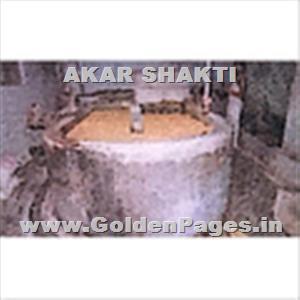AKAR SHAKTI ENG.INDUSTRIES
Featured Products
Highest quality standards are achieved through the implementations of latest technology, decades of experience and everlasting moral values , which have helped us to retain our customers as well as multiply them.
Welcome to AKAR SHAKTI ENG.INDUSTRIES
Rag Chopping

Description / Specification of Rag Chopping
We are involved in offering a wide range of Rag Chopping to our most valued clients. Our range of these are widely appreciated by our clients which are situated all round the nation. We offer our range of it at most affordable prices.
We introduce ourselves as an eminent trader and supplier of an extensive array of Rag Chopping. Prior to dispatch, our quality controllers run numerous tests on the entire range on various parameters of quality and durability. The offered equipment is manufactured using superior quality components with the aid of sophisticated techniques at the vendors' end. Moreover, our precious clients can purchase it in different technical specifications at reasonable price from us within promised time frame.
Features:
Sturdy design
Highly durable
Application specific design
Beating

Beating
The chopped rags are converted into a fine pulp in a ‘Hollander Beater'. Inert chemicals, like rosin soap and alum are added to give the paper the desired physical properties and the consistency required. When making colored and or textured papers, the color dyes and or textured materials like straw,grass, silk or jute fibres etc., are added during this process. The resulting pulp is now ready for sheet formation.
Sheet Formation

Sheet Formation
There are two methods of sheet formation which are being used in India.
Lifting: Lifting is the modern method. It employs the use of a steel water tank fitted with an apparatus to lift/lower the mould. The mould is clamped between two wooden deckles(frames) in a water tank. A measured quantity of the pulp (depending on the thickness of the paper required) is poured evenly in to the mould. The mould is then shaken side to side horizontally (to ensure cross linking of the fibres-a unique characteristics of handmade paper) and raised mechanically to ddrain excess water. A sheet of pulp is formed over the mould which is taken out after unclamping the frame.
Dipping: Dipping is the traditional method. In this method the pulp is transferred from the beater in to a masonry trough or vat. Depending on the thickness of the paper required, the pulp is diluted by mixing it with water. The mould, made of a wooden frame with a wire mesh or a bamboo stick mat is dipped by hand in to the pulp. The frame is then shaken side to side and lifted out of the vat. A sheet of pulp is formed over the mould.
Our Vision
* To embrace new technologies and methods. * To give unsurpassed products and services to the clients. * To constantly look for improvement and changes.



















